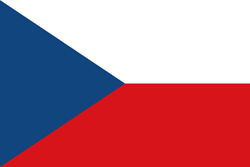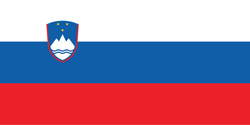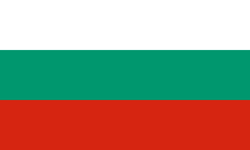Countries
IPPOG
IPPOG Forum Members
Czech Republic

Intro
Particle physicists in Czech Republic are curious and keen on discovering of all beauties and secrets of the microworld - pretty much like their colleagues all over the macroworld. There are teams of tens Czech physicists on ATLAS and ALICE experiments at CERN, studying collisions of protons and heavy ions. Heavy ion collisions are studied on STAR and sPHENIX in BNL and HADES and CBM in FAIR as well. Czech teams also participate in Electron-Ion Collider and linear positron-electron collider preparation. Smaller Czech teams are involved in neutrino physics research on NOvA, Daya Bay, JUNO and KATRIN, on astroparticle experiments Auger and CTA, on Belle II "beauty-factory" experiment in KEK and on several other experiments focused on various topics. Theorists are trying to wrap their head around topics like String Theory and Quantum Qravity, Grand Unified Theories, Chiral Perturbation Theory, phenomenology of heavy ion collisions, Cosmology and others.
Many particle physicists all over the Czech Republic enthusiastically organize various outreach events for general public. Physics is brought to music festivals or physics meets arts events, general public and high-school students build simple experiments at workshops or as part of big projects like CZELTA, high-school students are becoming particle physicists for one day in dedicated workshops and they are visiting Czech labs commonly. Of course, Czech physicists give engaging talks for general public, write various kinds of articles, give interviews for TV, radio and newspapers and they visit high-schools or even teach special physics courses for interested high-school students. Particle physicists are in contact with high-school teachers via various programs. For example, high-school teachers have regular opportunities to visit CERN. And high-school students too. Particle physics is our passion!
Details
JOINED: 2016
CURRENT STATUS: MEMBER
Čeští částicoví fyzikové jsou zvědaví a touží odhalovat všechny krásy a tajemství mikrosvěta - podobně jako všichni jejich kolegové z makrosvěta. Desítky českých fyziků studují srážky protonů a těžkých iontů na experimentech ATLAS a ALICE v CERN. Srážky těžkých iontů jsou také zkoumány Čechy na experimentech STAR a sPHENIX v BNL, HADES a CBM ve FAIR. České týmy se také podílejí na přípravách nových urychlovačů, jejichž cílem je studovat srážky elektronů s těžkými ionty a elektronů s pozitrony. Menší české týmy se podílejí na neutrinové fyzice v experimentech NOvA, Daya Bay, JUNO a KATRIN, na astročásticových experimentech Auger a CTA, v "továrně na krásu" Belle II v KEKu a na několika dalších experimentech zaměřujících se na různá témata. Teoretikové se zabývají věcmi, jako jsou strunová teorie, kvantová gravitace, velké unifikační teorie, chirální poruchová teorie, fenomenologie srážek těžkých iontů, kosmologie a další.
Mnozí částicoví fyzikové energicky organizují po celé České republice nejrůznější popularizační akce pro širokou veřejnost. Fyzika se tak dostává na hudební festivaly a prolíná se s uměním v dedikovaných projektech, středoškoláci a veřejnost stavějí jednoduché experimenty na jednorázových workshopech, nebo jako součást velkého projektu CZELTA, středoškoláci se na den stávají částicovými fyziky a také běžně navštěvují české laboratoře. Samozřejmě také částicoví fyzikové v ČR běžně přednášejí pro širokou veřejnost, píší nejrůznější články o fyzice, dávají rozhovory pro televizi, rozhlas a noviny, navštěvují školy a někteří na školách dokonce učí pravidelné výběrové kurzy. Česká komunita částicových fyziků udržuje kontakt se středoškolskými učiteli skrze různé speciální programy. Například mají středoškolští učitelé pravidelné příležitosti k návštěvě CERNu. A také středoškolští studenti. Částicová fyzika je naše vášeň
JOINED: 2016
CURRENT STATUS: MEMBER
Representative
Jiří Kvita
IPPOG
IPPOG Forum Members
ATLAS Collaboration
Intro
ATLAS is a general-purpose particle-physics experiment at the Large Hadron Collider (LHC) at CERN. It is run by an international collaboration with about 5000 members from 180 institutions in 40 countries worldwide. It has been designed to exploit the full discovery potential and the huge range of physics opportunities that the LHC provides.
ATLAS' scientific exploration uses precision measurement to push the frontiers of knowledge by seeking answers to fundamental questions such as: What are the basic building blocks of matter? What are the fundamental forces of nature? Could there be a greater underlying symmetry to our universe?
ATLAS physicists test the predictions of the Standard Model, which encapsulates our current understanding of what the building blocks of matter are and how they interact. These studies can lead to ground-breaking discoveries, such as that of the Higgs boson, physics beyond the Standard Model and the development of new theories to better describe our universe.
Details
Representative
Dilia Maria Portillo Quintero
IPPOG
IPPOG Forum Members
Slovenia

Intro
Slovenia has been involved with various big particle physics projects almost as long as it has been a country. Indeed, the first collaboration agreement between CERN and Slovenia dates back to the same year (1991). However, Slovenian physicists were already involved with various particle physics experiments before that time. Nowadays, Slovenian scientific institutions collaborate with the ATLAS experiment at CERN, experiments Belle and Belle II at KEK, and observatory Pierre Auger. Slovenian physicists also organise various Masterclasses, science shows, talks and open days for high-school students, as well as co-coordinate Slovenian Teacher Programmes in connection with CERN.
Details
JOINED: 2016
CURRENT STATUS: MEMBER
Slovenija se v svet fizike delcev vključuje skoraj od prvega dne samostojnosti. Prvi sporazum med Slovenijo in CERNom je bil tako sklenjen že leta 1991. Slovenski fiziki pa so bili v razne eksperimente fizike delcev po svetu vključeni že pred tem. Danes razne slovenske raziskovalne institucije v fiziki delcev sodelujejo z eksperimentom ATLAS v CERNu, eksperimentoma Belle in Belle II v KEKu in observatorijem Pierre Auger. Poleg tega slovenski fiziki in fizičarke organizirajo različne Masterclass-e, znanstvene predstave, predavanja in dneve odprtih vrat za dijake in dijakinje. V sodelovanjem s CERNom pa organizirajo tudi programe za slovenske učitelje in učiteljice.
JOINED: 2016
CURRENT STATUS: MEMBER
Representative
Andrej Gorišek
IPPOG
IPPOG Forum Members
LHCb Collaboration
Intro
The LHCb (Large Hadron Collider beauty) experiment at CERN, located at Point 8 of the LHC near Geneva, focuses on studying b-quarks to understand the differences between matter and antimatter. It started operating in 2010 and investigates CP violation and rare particle decays, providing insights into why the universe is dominated by matter. LHCb has made significant discoveries, including exotic particles like tetraquarks and pentaquarks, and has observed CP violation in baryons. Its findings test the Standard Model and explore potential new physics.
Details
L'expérience LHCb (Large Hadron Collider beauty) au CERN, située au Point 8 du LHC près de Genève, se concentre sur l'étude des quarks b afin de comprendre les différences entre la matière et l'antimatière. Elle a commencé à fonctionner en 2010 et examine la violation de CP ainsi que les désintégrations rares de particules, fournissant des informations sur la prédominance de la matière dans l'univers. LHCb a réalisé des découvertes importantes, notamment des particules exotiques comme les tétraquarks et les pentaquarks, et a observé la violation de CP dans les baryons. Ses résultats testent le Modèle Standard et explorent de nouvelles physiques potentielles.
Representative
Gediminas Sarpis
IPPOG
IPPOG Forum Members
LHCb Collaboration
Intro
The LHCb (Large Hadron Collider beauty) experiment at CERN, located at Point 8 of the LHC near Geneva, focuses on studying b-quarks to understand the differences between matter and antimatter. It started operating in 2010 and investigates CP violation and rare particle decays, providing insights into why the universe is dominated by matter. LHCb has made significant discoveries, including exotic particles like tetraquarks and pentaquarks, and has observed CP violation in baryons. Its findings test the Standard Model and explore potential new physics.
Details
L'expérience LHCb (Large Hadron Collider beauty) au CERN, située au Point 8 du LHC près de Genève, se concentre sur l'étude des quarks b afin de comprendre les différences entre la matière et l'antimatière. Elle a commencé à fonctionner en 2010 et examine la violation de CP ainsi que les désintégrations rares de particules, fournissant des informations sur la prédominance de la matière dans l'univers. LHCb a réalisé des découvertes importantes, notamment des particules exotiques comme les tétraquarks et les pentaquarks, et a observé la violation de CP dans les baryons. Ses résultats testent le Modèle Standard et explorent de nouvelles physiques potentielles.
Representative
Harry Cliff
IPPOG
IPPOG Forum Members
LHCb Collaboration
Intro
The LHCb (Large Hadron Collider beauty) experiment at CERN, located at Point 8 of the LHC near Geneva, focuses on studying b-quarks to understand the differences between matter and antimatter. It started operating in 2010 and investigates CP violation and rare particle decays, providing insights into why the universe is dominated by matter. LHCb has made significant discoveries, including exotic particles like tetraquarks and pentaquarks, and has observed CP violation in baryons. Its findings test the Standard Model and explore potential new physics.
Details
L'expérience LHCb (Large Hadron Collider beauty) au CERN, située au Point 8 du LHC près de Genève, se concentre sur l'étude des quarks b afin de comprendre les différences entre la matière et l'antimatière. Elle a commencé à fonctionner en 2010 et examine la violation de CP ainsi que les désintégrations rares de particules, fournissant des informations sur la prédominance de la matière dans l'univers. LHCb a réalisé des découvertes importantes, notamment des particules exotiques comme les tétraquarks et les pentaquarks, et a observé la violation de CP dans les baryons. Ses résultats testent le Modèle Standard et explorent de nouvelles physiques potentielles.
Representative
Vladimir Gligorov
IPPOG
IPPOG Forum Members
LHCb Collaboration
Intro
The LHCb (Large Hadron Collider beauty) experiment at CERN, located at Point 8 of the LHC near Geneva, focuses on studying b-quarks to understand the differences between matter and antimatter. It started operating in 2010 and investigates CP violation and rare particle decays, providing insights into why the universe is dominated by matter. LHCb has made significant discoveries, including exotic particles like tetraquarks and pentaquarks, and has observed CP violation in baryons. Its findings test the Standard Model and explore potential new physics.
Details
L'expérience LHCb (Large Hadron Collider beauty) au CERN, située au Point 8 du LHC près de Genève, se concentre sur l'étude des quarks b afin de comprendre les différences entre la matière et l'antimatière. Elle a commencé à fonctionner en 2010 et examine la violation de CP ainsi que les désintégrations rares de particules, fournissant des informations sur la prédominance de la matière dans l'univers. LHCb a réalisé des découvertes importantes, notamment des particules exotiques comme les tétraquarks et les pentaquarks, et a observé la violation de CP dans les baryons. Ses résultats testent le Modèle Standard et explorent de nouvelles physiques potentielles.
Representative
Guillaume Max Pietrzyk
IPPOG
IPPOG Forum Members
Bulgaria

Intro
Sofia Tech Park develops activities to support start-ups, small and medium enterprises, science, education and innovation. There are few main components included in the park:
Incubator – The incubator community includes start-ups and developed companies, investment funds and educational organizations.
Forum – A venue for events in the field of science, education, innovation, technology and entrepreneurship.
Experimentarium – A permanent interactive composition “TechnoMagicLand” for children with interests in the field of natural sciences.
Laboratory complex (R&D&I consortium) – Our 11 laboratories offer an opportunity for development of research and business projects in various research areas.
Details
JOINED: 2016
CURRENT STATUS: MEMBER
София Тех Парк развива дейности в подкрепа на стартиращи предприятия, малки и средни предприятия, наука, образование и иновации. Има няколко основни компонента, включени в парка:
Инкубатор – Общността на инкубатора включва стартиращи и развити компании, инвестиционни фондове и образователни организации.
Форум – Място за събития в областта на науката, образованието, иновациите, технологиите и предприемачеството.
Експериментариум - Постоянна интерактивна композиция “ТехноМеджиkЛенд” за деца с интереси в областта на природните науки.
Лабораторен комплекс (Консорциум за научноизследователска и развойна дейност) – Нашите 11 лаборатории предлагат възможност за развитие на изследователски и бизнес проекти в различни изследователски области.
JOINED: 2016
CURRENT STATUS: MEMBER
Representative
Svejina Dimitrova
IPPOG
IPPOG Forum Members
Bulgaria

Intro
Sofia Tech Park develops activities to support start-ups, small and medium enterprises, science, education and innovation. There are few main components included in the park:
Incubator – The incubator community includes start-ups and developed companies, investment funds and educational organizations.
Forum – A venue for events in the field of science, education, innovation, technology and entrepreneurship.
Experimentarium – A permanent interactive composition “TechnoMagicLand” for children with interests in the field of natural sciences.
Laboratory complex (R&D&I consortium) – Our 11 laboratories offer an opportunity for development of research and business projects in various research areas.
Details
JOINED: 2016
CURRENT STATUS: MEMBER
София Тех Парк развива дейности в подкрепа на стартиращи предприятия, малки и средни предприятия, наука, образование и иновации. Има няколко основни компонента, включени в парка:
Инкубатор – Общността на инкубатора включва стартиращи и развити компании, инвестиционни фондове и образователни организации.
Форум – Място за събития в областта на науката, образованието, иновациите, технологиите и предприемачеството.
Експериментариум - Постоянна интерактивна композиция “ТехноМеджиkЛенд” за деца с интереси в областта на природните науки.
Лабораторен комплекс (Консорциум за научноизследователска и развойна дейност) – Нашите 11 лаборатории предлагат възможност за развитие на изследователски и бизнес проекти в различни изследователски области.
JOINED: 2016
CURRENT STATUS: MEMBER
Representative
Boyka Aneva
IPPOG
IPPOG Forum Members
Bulgaria

Intro
Sofia Tech Park develops activities to support start-ups, small and medium enterprises, science, education and innovation. There are few main components included in the park:
Incubator – The incubator community includes start-ups and developed companies, investment funds and educational organizations.
Forum – A venue for events in the field of science, education, innovation, technology and entrepreneurship.
Experimentarium – A permanent interactive composition “TechnoMagicLand” for children with interests in the field of natural sciences.
Laboratory complex (R&D&I consortium) – Our 11 laboratories offer an opportunity for development of research and business projects in various research areas.
Details
JOINED: 2016
CURRENT STATUS: MEMBER
София Тех Парк развива дейности в подкрепа на стартиращи предприятия, малки и средни предприятия, наука, образование и иновации. Има няколко основни компонента, включени в парка:
Инкубатор – Общността на инкубатора включва стартиращи и развити компании, инвестиционни фондове и образователни организации.
Форум – Място за събития в областта на науката, образованието, иновациите, технологиите и предприемачеството.
Експериментариум - Постоянна интерактивна композиция “ТехноМеджиkЛенд” за деца с интереси в областта на природните науки.
Лабораторен комплекс (Консорциум за научноизследователска и развойна дейност) – Нашите 11 лаборатории предлагат възможност за развитие на изследователски и бизнес проекти в различни изследователски области.
JOINED: 2016
CURRENT STATUS: MEMBER

